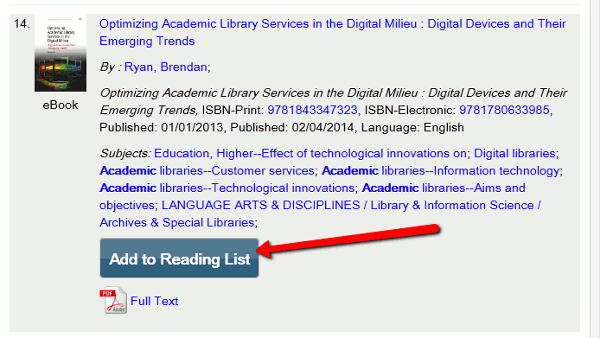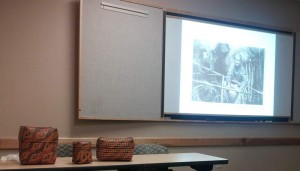LSU Libraries has made it easier to access full-text library materials through Moodle. The LSU Libraries Reading List Tool allows instructors to create reading lists in Moodle. Without leaving Moodle, the instructor can search the library’s holdings, which include the many full-text databases and ebook collections that are available in Discovery. Then with one click, they can add results to create reading lists that link to full text articles, ebooks and Internet resources.
Not only does this tool make things easier for the instructor, it also creates a rich, seamless online environment for the student. When students interact with the lists, they just click on the article title and start reading the material. Since they have already logged into Moodle, they will be authenticated to view the library’s full-text resources. With the reading lists already built, students do not need to run multiple searches to find the desired material. The content is instantly provided, and is available day and night.
Additionally, instructors may annotate the reading lists with notes, instructions or questions, such as “Begin with chapter 2 of this ebook”. Reading lists may be copied from one course to another or even shared among different instructors. This could help in those situations where the same course is taught in multiple sections or again in different semesters.
The reading lists connect to the LSU Libraries Discovery platform, where the library aggregates many of its high-quality databases. By accessing the articles and ebooks through Moodle and the licensed platforms on Discovery, students and faculty can be sure that they are accessing quality information safely and legally.
For more information on implementing the LSU Libraries Moodle Reading List Tool, visit the Subject Guide or the GROK article. Additional assistance can be provided by the Libraries’ Research and Instruction Desk at (225)-578-8875 or online.





